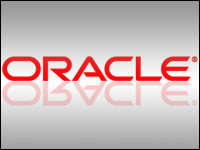
Oracle introduced a new collaborative platform called “Beehive”at OpenWorld last week. To be sure, it was hardly the only announcement the enterprise software vendor made — but it did serve as grist for many bloggers.
“It gives users a very slick way to communicate and work together, and does an excellent job of tying together email client, IM programs, calendars, VM and conferencing,” writes David Brunet, principal at Mipro Consulting and an OpenWorld attendee. “It does all this behind the scenes so users can easily share (and collaboratively edit) documents, emails, etc. Pretty cool stuff.”
Oracle is basically jumping on a bandwagon in the collaboration space, Brunet told CRM Buyer. Several best-of-breed vendors already offer such functionality.
However, “it is still a good opportunity for Oracle,” he said. “It has put all the various pieces together in one enterprise package.”
Demo Disconnect
Not everyone in enthralled with Oracle’s latest endeavor, though.
In PowerPoint, Beehive “looks like the realization of the promise of Web 2.0/Enterprise 2.0,” observed Bruce Richardson of AMR Research. “The slides promised a collaboration server for email, voicemail, discussions, search, conferencing, chat, tags, calendaring, wikis, ‘presence,’ and the like. All that was missing were integration with Facebook and support for prediction networks.”
However, the PowerPoint slide show was more impressive than the demo, he continued, which showed how coworkers could share documents.
“This looked like a poor imitation of IBM’s Lotus capabilities. While it did provide strong security (the originator can “delete” the document once you no longer have permission to view it even if it appears to remain on your hard drive), I was disappointed that it didn’t take better advantage of the newer technology,” laments Richardson.
His parting shot: “Beehive has been incubating at Oracle for three years. Maybe the next demo will be more interesting.”
OpenWorld Wrap-Up
The other big news is that Fusion is not going to come to market this year.
Though Oracle had already broken the news in prebriefings, “it is pretty much official now,” Jim Holincheck, a Gartner analyst, told readers. “We started to have concerns about whether or not Oracle would deliver Fusion Applications in 2008 when John Wookey left Oracle. The first phase will be edge applications, like the Social CRM applications, which have been delivered in 2008.”
Other disappointing news: “PeopleSoft Enterprise 9.1 will not be delivered in 2008,” continued Holincheck. “I do not know if Oracle committed publicly to this date, but they had been indicating privately that 9.1 would be delivered in 2008, not 2009. HCM is the first pillar to be delivered in 9.1 and given the scope of the release (including new applications such as Succession Management and a rewritten Compensation Management), it is understandable that it would take some time. However, release 9.0 became generally available in December 2006. So, it is going to be well over two years before the next release. In a market where new releases from Talent Management application vendors come out as frequently as monthly, that is a very long time.”
Waiting for Fusion
For a great overview of Fusion, check out a blog post by Brent Martin at ERP Associates.
“The following apps will be part of Fusion 1.0: CRM, Procurement, HRMS, Talent Management, Payroll. The following apps will not: Public Sector, Manufacturing, Distributed order orchestration,” Martin noted.
Winter 09
We can expect a similar blog onslaught following Salesforce.com’s Winter 09 release.
Until then, Salesforce.com’s prerelease trial gives the curious an opportunity to explore the app’s new features.
“One new or rather a fully supported feature is Dynamic SOQL (it was previously in pilot),” notes Nick Simha. “Dynamic SOQL lets you build and execute a query at runtime. This feature is especially important if you are an ISV (Independent Software Vendor) or someone writing tools that has to work in multiple orgs where it is impossible to know until runtime what the query looks like. As an example, a general purpose reporting tool would have to let the user select the objects and other criteria at runtime and build a query based on the selected criteria. It is also useful if you want your code to be flexible and independent of the underlying data model.”
Briefly: You might find it worthwhile to look into this channel for all videos about and related to Google Apps, Google’s suite of communication and collaboration products for businesses, nonprofit organizations and schools.





















































